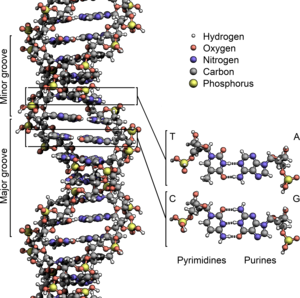Genomic Instability
Genomic instability refers to the increased tendency of alterations in the genome during the life cycle of cells. It is a hallmark of aging and is characterized by a high frequency of mutations within the genome, including chromosomal rearrangements, DNA damage, and telomere shortening. This instability plays a significant role in the aging process and the development of various age-related diseases, particularly cancer.
Causes of Genomic Instability
Genomic instability can arise due to a multitude of factors:
- DNA Damage: External and internal factors such as UV radiation, environmental toxins, and metabolic byproducts can cause DNA damage. If unrepaired, this damage can lead to mutations.
- Replication Errors: Errors during DNA replication can introduce mutations. The cellular machinery, while usually accurate, can make mistakes or be influenced by external factors.
- Telomere Shortening: Each cell division leads to a slight shortening of telomeres, the protective caps on the ends of chromosomes. Over time, this can lead to genomic instability as critical DNA sequences may be lost or the chromosome structure may be compromised.
- Defective DNA Repair Mechanisms: Cells have intricate DNA repair mechanisms. Defects in these processes can result in an accumulation of DNA damage, contributing to genomic instability.
Impact on Aging and Disease
Genomic instability has profound effects on cellular and organismal health:
- Aging: Accumulation of DNA damage and telomere shortening are strongly associated with the aging process. As cells accumulate genetic damage over time, they lose their functionality and ability to divide, contributing to the aging phenotype.
- Cancer: Genomic instability is a key characteristic of cancer cells, allowing them to acquire mutations that enable uncontrolled growth, invasion, and metastasis.
- Neurodegenerative Disorders: DNA damage and instability in neurons are linked to various neurodegenerative disorders, such as Alzheimer's and Parkinson's disease.
- Immune System Impairment: Genomic instability can impair the immune system, making the body more susceptible to infections and less efficient at tumor surveillance.
Cellular Response to Genomic Instability
Cells have evolved several mechanisms to respond to genomic instability:
- DNA Repair Pathways: Cells have several DNA repair pathways to fix different types of DNA damage. These include base excision repair, nucleotide excision repair, mismatch repair, and double-strand break repair mechanisms.
- Cell Cycle Arrest: In response to DNA damage, cells can halt their cell cycle to provide time for repair. This is mediated by checkpoint proteins like p53.
- Apoptosis: If damage is too severe, cells can undergo programmed cell death to prevent the propagation of the instability.
- Cellular Senescence: Cells may also enter a state of permanent cell cycle arrest known as senescence, where they remain metabolically active but no longer divide.
Research and Therapeutic Implications
Research into genomic instability has significant implications for aging and disease treatment:
- Cancer Therapy: Understanding the mechanisms of genomic instability in cancer can lead to more effective treatments, including targeted therapies that exploit the unique characteristics of cancer cells.
- Aging Interventions: Strategies to enhance DNA repair or protect telomeres are being explored as potential interventions to delay aging and extend healthy lifespan.
- Biomarkers: Measures of genomic instability can serve as biomarkers for aging and the efficacy of anti-aging interventions.
See Also
- Hallmarks of Aging
- Wikipedia - Genomic instability

